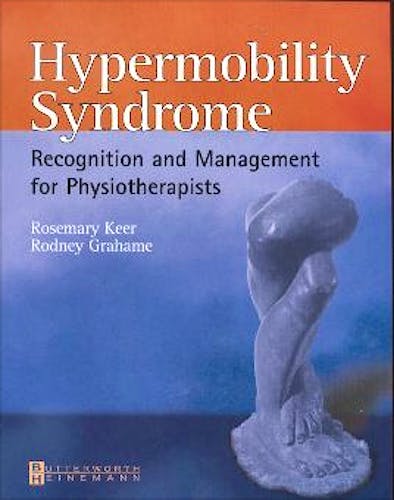

No hay productos en el carrito



Hypermobility Syndrome: Recognition and Management for Physiotherapist
Keer Rosemary
1ª Edición Julio 2003
Inglés
176 pags
500 gr
16 x 26 x 1 cm
ISBN 9780750653909
Editorial BUTTERWORTH
LIBRO IMPRESO
-5%
65,39 €62,12 €IVA incluido
62,88 €59,73 €IVA no incluido
Recíbelo en un plazo de
7 - 10 días
El síndrome de hipermovilidad articular no es una variante de la normalidad,
como era considerado hasta recientemente, sino una entidad patológica
perteneciente a la familia de desórdenes hereditarios del tejido conectivo.
Cada día es más evidente que este síndrome es un problema
clínico de importancia, que hasta ahora ha sido objeto de escasa atención.
De hecho, una significativa proporción de sujetos que solicitan asistencia
sanitaria sufren en mayor o menor grado un síndrome de hipermovilidad
articular.
Los sujetos que padecen este síndrome presentan una mayor predisposición
ha sufrir cambios degenerativos por efectos de traumatismos tanto agudos como
repetitivos, tienen un mayor riesgo de desarrollar una artrosis precoz, existiendo
una asociación estadística entre éste síndrome y
la fibromialgia.
En este libro se discute la relación del síndrome de hipermovilidad articular con otras patologías hereditarias del tejido conjuntivo, se aborda el modo de identificar adecuadamente este síndrome, así como su manejo y tratamiento en niños, adolescentes y adultos. Hay que destacar que, aunque se presentan con suficiente profundidad todos aquellos aspectos teóricos del problema, la orientación del libro es eminentemente práctica, siendo su objetivo el de ofrecer herramientas para una adecuado manejo de estos pacientes.
Este libro, el primero que aborda de forma específica esta patología, es de lectura obligada para todos aquellos profesionales, fisioterapeutas y médicos, implicados en el tratamiento de problemas musculoesqueléticos relacionados con la hipermovilidad articular.
Profesor Rafael Torres Cueco
Departamento de Fisioterapia
Universidad de Valencia
Hypermobility Syndrome is a condition often encountered in patients, but it
is easily overlooked. This book brings HMS to the attention of physiotherapists
and other health care professionals, educating them as to its presentation,
what to look for and how best to treat it. Physiotherapists are in a unique
position to be able to recognise the condition as they often spend more time
with a patient and perform an in-depth examination of the musculoskeletal system.
Hypermobility syndrome (HMS) is an inherited connective tissue disorder affecting
collagen and is characterised by a collection of features and symptoms, such
as increased mobility of the joints, due to lax ligaments, subluxations or dislocations,
uterine, rectal prolapse, stretchy skin which heals poorly, and usually pain,
often in more than one area.
Features
This book
. Shows how to identify the condition in the clinic.
. Includes details of a comprehensive assessment
Contents
1. Hypermobility and Hypermobility syndrome
Professor Rodney Grahame
2. Hypermobility and the Heritable Disorders of Connective Tissue
Professor Rodney Grahame
3. Overall Management of the Joint Hypermobility Syndrome
Professor Rodney Grahame
- Hypermobility Syndrome in Children
Sue M Maillard & Dr Kevin J Murray
4. Management of the Hypermobile Adolescent
Alison Middleditch
- Physiotherapy Assessment of the Hypermobile Adult
Rosemary J Keer - Management of the Hypermobile Adult
Rosemary Keer, Anna Edwards-Fowler & Dr E Mansi - Rehabilitation, Fitness, Sport and Performance for Individuals with Joint
Hypermobility
Jane Simmonds - Joint Hypermobility and Work Related Musculoskeletal Disorders (WMSD)
Jean Mangharam
5. Joint Hypermobility and Chronic Pain: Possible Linking Mechanisms and Management
Highlighted by a Cognitive-Behavioural Approach.
Vicky Harding
- Hypermobility Syndrome from the Patient's Perspective
Sarah Gurley-Green
© 2025 Axón Librería S.L.
2.149.0